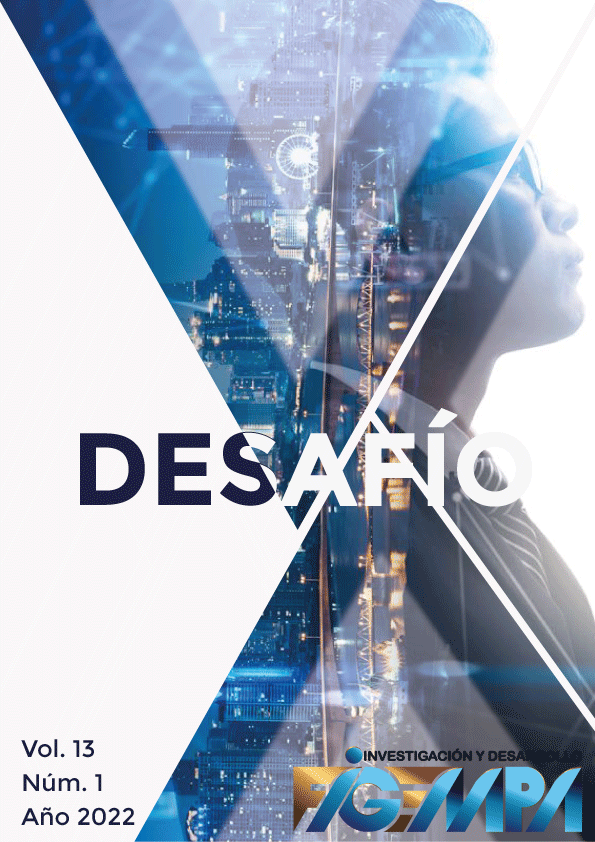Delimitación automática de ceniza volcánica en imágenes satelitales mediante Deep Learning
Contenido principal del artículo
Resumen
La Inteligencia Artificial ha tenido un gran impacto en los últimos años, cada vez este campo de la Informática es más utilizado en el tratamiento de problemas en el área geológica. Una de las principales aplicaciones es la detección y segmentación de ceniza en imágenes satelitales. Para tal fin, proponemos un modelo de Deep Learning basado en una red neuronal convolucional (CNN) y entrenado con un dataset de imágenes satelitales que tienen aplicado el filtro “ash”, que proporciona una coloración rosada rojiza a la ceniza, facilitando el proceso de segmentación. Los resultados obtenidos indican una precisión del 99%, conveniente para su aplicación práctica para la segmentación de la ceniza emitida por el Volcán Sangay, el cual ha presentado periodos de actividad volcánica en los últimos años. Las imágenes segmentadas generadas por nuestro modelo son congruentes con los estudios publicados por el IG-EPN.
Descargas
Métricas
Detalles del artículo

Esta obra está bajo una licencia internacional Creative Commons Atribución-NoComercial 4.0.
Citas
Aguilar, R., Torres, J., & Martín, C., 2019. Aprendizaje Automático en la Identificación de Sistemas. Un Caso de Estudio en la Predicción de la Generación Eléctrica de un Parque Eólico. Revista Iberoamericana de Automática e Informática industrial, 16(1), 114-127. https://doi.org/10.4995/riai.2018.9421 DOI: https://doi.org/10.4995/riai.2018.9421
Caldas, S., 2017. Exploración de machine learning como técnica de segmentación pulmonar en presencia de opacidades de gran tamaño. Proyecto de Grado. Bogotá: Universidad de los Andes.
CIMSS, 2021. Cooperative Institute for Meteorological Satellite Studies. https://cimss.ssec.wisc.edu/
CIRA, 2021. Cooperative Institute for Research in the Atmosphere#. https://www.cira.colostate.edu/
De la Fuente, O., 2019. Google Colab: Python y Machine Learning en la nube. Available at: https://www.adictosaltrabajo.com/2019/06/04/google-colab-python-y-machine-learning-en-la-nube/ [Último acceso: 15 Marzo 2021].
GICVE, 2020. Ceniza Volcánica en Ecuador. Available at: https://www.usfq.edu.ec/es/investigacion/grupo-de-investigacion-sobre-la-ceniza-volcanica-en-el-ecuador-gicve
IG-EPN, 2021. IGAl Instante Informativo VOLCÁN SANGAY Nº 2021-034. Quito: Escuela Politécnica Nacional.
IG-EPN, 2021. Sangay. Available at: https://www.igepn.edu.ec/sangay. [Último acceso: 20 Marzo 2021].
Li, S., Yang, C., Sun, H. & Zhang, H., 2019. Seismic fault detection using an encoder–decoder convolutional neural network with a small training set. Journal of Geophysics and Engineering, 16(1), pp. 175–189. https://doi.org/10.1093/jge/gxy015 DOI: https://doi.org/10.1093/jge/gxy015
Livne, M., Rieger, J., Aydin, O.U., Taha, A.A., Akay, E.M., Kossen, T., Sobesky, J., Kelleher, J.D., Hildebrand, K., Frey, D. and Madai, V.I., 2019. A U-Net Deep Learning Framework for High Performance Vessel Segmentation in Patients With Cerebrovascular Disease. Frontiers in Neuroscience. 13:97. https://doi.org/10.3389/fnins.2019.00097 DOI: https://doi.org/10.3389/fnins.2019.00097
NOOA, 2021. National Oceanic and Atmospheric Administration. https://www.noaa.gov/
OPS, 2021. Los impactos a la salud asociados con las cenizas de los volcanes. Available at: https://www.paho.org/hq/index.php?option=com_content&view=article&id=8194:2013-los-impactos-salud-asociados-cenizas-volcanes&Itemid=39797
Porcelli, A.M. 2020. Artificial Intelligence and Robotics: Its social, ethical and legal dilemmas. Derecho global. Estudios sobre derecho y justicia, 6(16), 49-105. https://doi.org/10.32870/dgedj.v6i16.286 DOI: https://doi.org/10.32870/dgedj.v6i16.286
Reyes Ortiz, O. J., Mejía, M., & Useche Castelblanco, J. S., 2019. Técnicas de inteligencia artificial utilizadas en el procesamiento de imágenes y su aplicación en el análisis de pavimentos. Revista EIA, 16(31), 189–207. https://doi.org/10.24050/reia.v16i31.1215 DOI: https://doi.org/10.24050/reia.v16i31.1215
Ronneberger, O., Fischer, P. & Brox, T., 2015. U-Net: Convolutional Networks for Biomedical Image Segmentation. Springer International Publishing Switzerland, pp. 234-241. https://doi.org/10.1007/978-3-319-24574-4_28 DOI: https://doi.org/10.1007/978-3-319-24574-4_28
Sánchez, A., 2020. Aprende con Alf. Available at: https://aprendeconalf.es/docencia/python/manual/numpy/ [Último acceso: 22 Marzo 2021].
SciPy, 2021. Numpy. Available at: https://numpy.org/doc/stable/user/index.html [Último acceso: 22 Marzo 2021].
Shin , T., 2020. Comprensión de la Matriz de Confusión y Cómo Implementarla en Python. https://towardsdatascience.com/understanding-the-confusion-matrix-and-how-to-implement-it-in-python-319202e0fe4d [Último acceso: 21 Marzo 2021].
Silva, A., 2020. Estudio comparativo de modelos de clasificación automática de señales de tráfico. Universidad Pública de Navarra-España., pp. 7-14.
Yasrab, R., 2018. ECRU: An Encoder-Decoder Based Convolution Neural Network (CNN) for Road-Scene Understanding. Journal of Imaging, 4(10), 116; https://doi.org/10.3390/jimaging4100116 DOI: https://doi.org/10.3390/jimaging4100116

